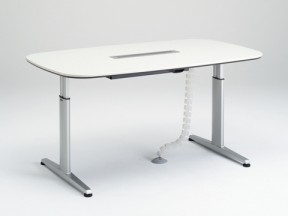This week, let’s dig into the Allsteel research library archives again for a look at workstation ergonomics. Allsteel compares its Reach™ workstation with a traditional workstation in this white paper. The paper starts with a review of the basics. For example, workstations should have plenty of leg space and drawers that are easy to open and close. Next, Allsteel moves on to talking specifically about how the location of various workstation components (such as storage bins) can impact the body.
Ergonomic ROM Explained
Encouraging movement within the human body’s normal range of motion (ROM) is considered healthy. But too much repetitive motion or movements that require reaching, twisting, or bending beyond the normal ROM can cause strain. To break it down further, range of motion can be sorted into different zones from 0-3. Zones 0 and 1 are easy, comfortable movements. 2 and 3 require more effort and may be more likely to put undue stress on the body over time. Back, neck, shoulder, and wrist movements should be kept within the comfortable “zones” of movement most of the time to minimize potential strain.
The Testing Phase
Allsteel decided to use a motion analysis system (involving infrared video cameras and reflective markers) and electromyography (to measure electrical impulses in the muscles) to evaluate workstation use. They set up a traditional workstation and a Reach workstation with the same set of basic office supplies. Participants’ movements were documented as they retrieved and replaced each object in the workstation as instructed. Then, the results were analyzed to determine the range of motion and the amount of effort for the various movements.
Results and Conclusion
With the Reach model, participants could retrieve each of the most commonly used objects without going outside zones 0 and 1. The researchers concluded that Reach’s smaller overall footprint and closer placement of storage components helped make this possible. They feel that smaller movements can translate to greater productivity by increasing the speed and efficiency of work.



